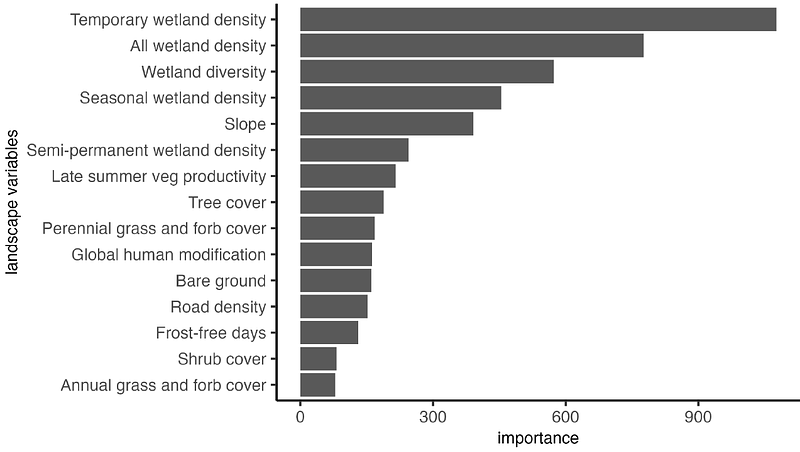Flood-irrigated agriculture mediates climate-induced wetland scarcity for summering sandhill cranes in western North America

Flood-irrigated agriculture mediates climate-induced wetland scarcity for summering sandhill cranes in western North America
Donnelly, J. P.; Collins, D. P.; Knetter, J. M.; Gammonley, J. H.; Boggie, M. A.; Grisham, B. A.; Nowak, C. M.; Naugle, D. E.
AbstractDocumenting a species\' extent is often the first step in understanding its ecology and is critical to informing conservation planning. Basic information about species distributions is lacking in many regions of the world, forcing natural resource managers to answer complex ecological questions with incomplete data. Information gaps are compounded by climate change, driving resource bottlenecks that can act as new and powerful demographic constraints on fauna. Here, we reconstructed greater sandhill crane (Antigone canadensis tabida) summering range in western North America using movement data from 120 GPS-tagged individuals to determine how landscape composition shaped their distributions. Landscape variables developed from remotely sensed data were combined with bird locations using cloud computing and machine learning to model distribution probabilities. Additionally, land-use practices and land ownership were summarized within summer range as a measure of use dependence. Wetland variables identified as important predictors of bird distributions were also evaluated in a post hoc analysis using satellite imagery to measure the long-term (1984-2022) effects of climate-driven surface water drying. Wetlands and associated agricultural practices accounted for 1.2% of the summer range but were key predictors of greater sandhill crane occurrence. Bird distributions were patterned primarily by riparian floodplains that concentrated water, wetlands, and flood-irrigated agriculture in otherwise arid and semi-arid landscapes. Findings highlighted the critical role of private lands in greater sandhill crane ecology as they accounted for 78% of predicted distributions. Wetland drying observed in portions of the range from 1984 to 2022 represented an emerging ecological bottleneck that could limit future greater sandhill crane summer range. Study outcomes provide novel insight into the significance of ecosystem services provided by flood-irrigated agriculture that supported nearly 60% of the wetland resources used by birds. Findings suggest greater sandhill cranes function as an umbrella species for agroecology and climate change adaptation strategies seeking to reduce agricultural water use through improved efficiency while also maintaining distinct flood-irrigation practices supporting greater sandhill cranes and other wetland-dependent wildlife. To inform conservation design, we make our wetland and sandhill crane summering distributions publicly available as interactive web-based mapping tools.